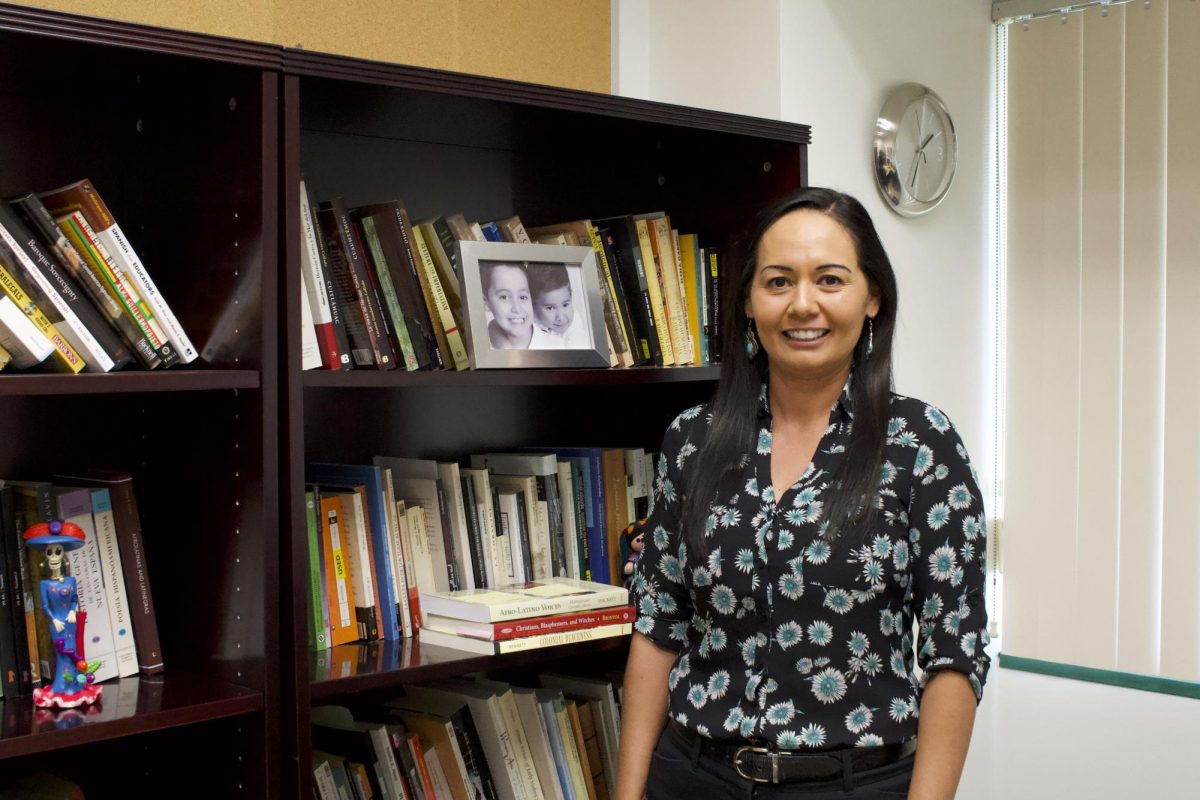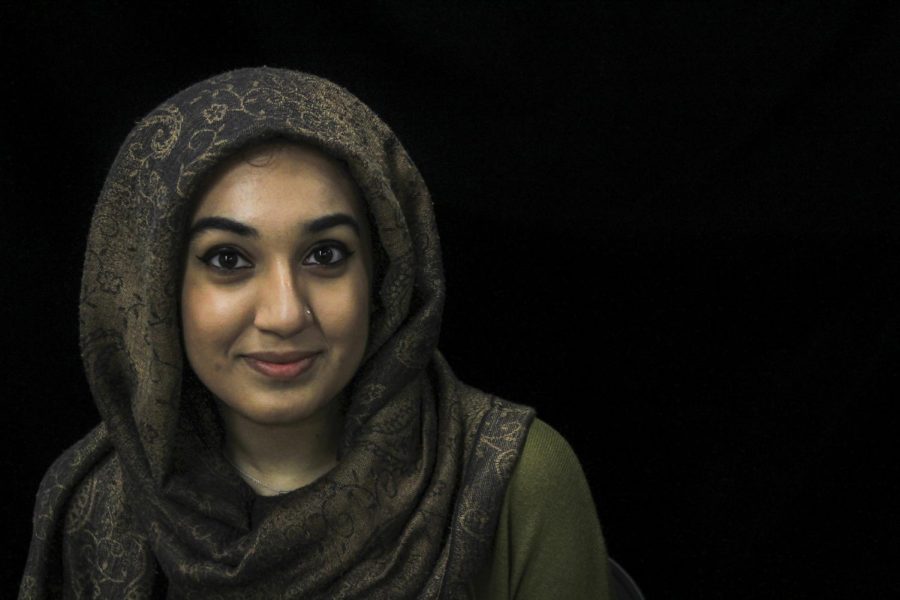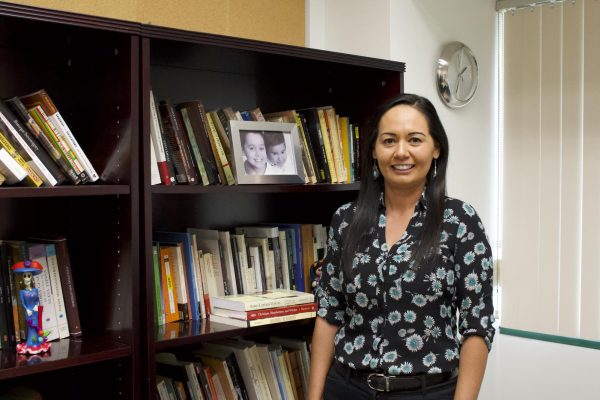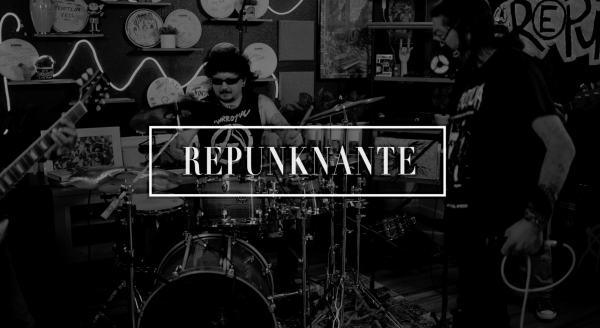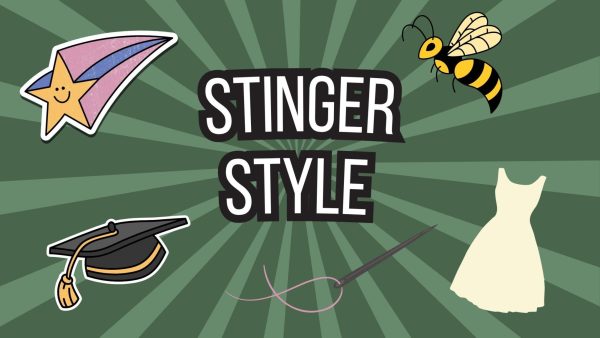Muslim students reveal relationship with hijab
Joseph Daniels - The State Hornet
Sacramento State junior Tamkinat Ahmad wears a hijab, a decision that was influenced by her volunteer service at her mosque.
After hearing the comments that President Donald Trump made during the 2016 presidential election, a Sacramento State student said she questioned whether or not she should continue to wear a hijab.
“I’m going to college, and I now have a lot of, you know, diverse social circles, but still, I was terrified for myself,” Shaq Usman, a junior criminal justice major, said. “I was like, ‘I don’t think I’m ready to face whatever is going to hit me, I’m so scared.’ ”
Four Sac State students who wear a hijab explained their personal reasons for wearing the garment and how they have experienced discrimination in their lives.
A hijab is a type of veil and head covering that is worn by some Muslim women. Different types include the niqab, the burqa and the chador. The custom of veiling predates Islam, but it is strongly associated with the religion in Western countries.
Maram Abed, a junior communications sciences and disorders major, has been asked by people if she has hair underneath her hijab and even if she wears it while she takes a showers.
“I make jokes about it, ‘Yeah, I use hijab and shoulders,’ ” Abed said. “They don’t always get it because they don’t know it’s called a hijab.”
Tamkinat Ahmad, a junior pre-biological sciences major, said that she also began to worry about wearing a hijab in public before her father sat down with her to tell her that he supported her either way.
Ahmad said she started to carry pepper spray around with her after she heard reports of Muslim women being attacked in the United States.
Abed once took a class at Sac State where a professor claimed that the Quran stated that Muslims are not allowed to be happy or smile. She said she raised her hand and told her professor that the correct context is that people should not be arrogant.
“I raised my hand, and I’m like, ‘What do you mean? Look around the classroom, we are all different,’ ” Abed said. “We are all diverse in our own way. Even if you take me and another Muslim, there is still diversity between us because each person is their own person.”
Abed said she received a B for the class, despite being on track to receive an A. After confronting the professor about her grade, it was changed to an A-.
Abed said that it has become common for her family to be randomly selected to be searched at airports, and that her father now makes jokes about the experience.
“He’s like, ‘I won this, I never won anything in my life,’ “ Abed said. “The lady was looking (at) him like, ‘OK, what?’ ”
Ahmad spoke of a specific incident when transportation security attempted to separate her parents from the rest of the family after they were randomly selected.
“I was scared,” Ahmad said. “When I saw them try to separate my parents, I was like, ‘Hold up, let me get all of my siblings together.’ ”
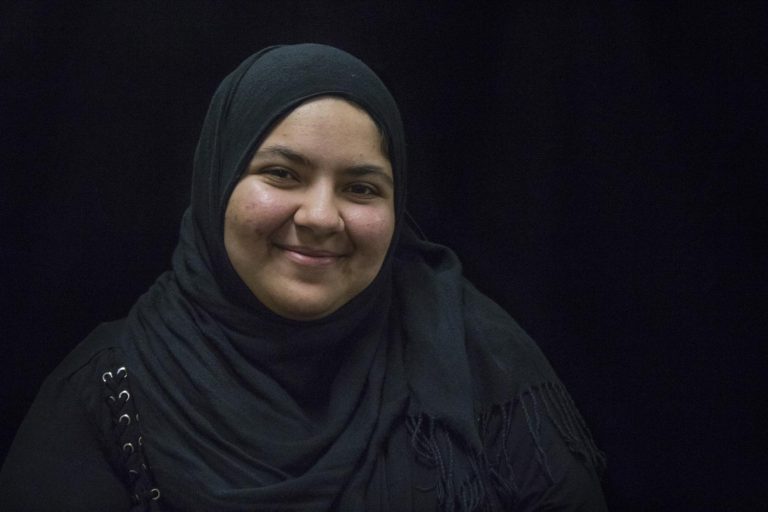
Sacramento State sophomore Asia Barakat wears a hijab after being inspired by her own grandmother.
Slavik Chiley, a student who preaches on campus, often holds signs that read, “Repent or perish” while telling large crowds of people that homosexuality is wrong, as previously reported. Abed said Chiley called out to her as she walked by one of his demonstrations.
“He yelled at me, like, ‘You’re going to go to hell,’ “ Abed said. “And then he’s like, “May God guide you,’ or whatever he said. I was so fed up though because I had a test, I was like, ‘Amen,’ and I just kept walking.”
Both of Ahmad’s and Usman’s families originated from Pakistan. However, Ahmad’s parents lived in the city, while Usman’s family lived in a rural area. Ahmad wears her hijab by choice, while Usman’s family expects her to wear the veiling.
Ahmad said that her mother did not expect her daughters to wear a veil because she wasn’t expected to growing up.
“I also volunteered at a mosque more often, and that kind of just influenced my decision to tell my parents that I want to wear the hijab,” Ahmad said.
Usman’s story is different. She said she began to wear a hijab because she grew up in a family in which it was essential for her to dress modestly.
Usman said she stopped wearing her hijab during the first year of middle school because it made her feel isolated from her peers, but she decided to wear it again in eighth grade.
This experience repeated itself when she went to high school. It was when she was in the 10th grade that she said that she had an epiphany.
“I was like, ‘Why am I trying to please other people?,’ ” Usman said. “What’s the point? In the end, it’s my choice. If I feel if I should wear it, I should wear it.”
Asia Barakat, a sophomore computer engineering major, said she began to wear a hijab because she was inspired by her grandmother who she said was a role model in her life.
Barakat said the hijab also serves as a reminder that she should be mindful of how she behaves.
“You should double think,” Barakat said. “Like, rethink your actions, and make sure you are doing what it is (not only) right for you, but for your community and the people around you.”
Barakat said the people who question her the most about why she wears a hijab are members of her own family, as she is one of the few people in her family to do so. She said sometimes her mom will tease her about it as well.
“I would forget I am wearing it around the house, and my mom would be like, ‘Why are you even… What are you doing?,’ ” Barakat said.
Abed, Barakat, Usman and Ahmad all said that the choice to wear or not wear a hijab does not make a woman a good or bad Muslim.
“Someone can be in miniskirts and short shorts, tank tops,” Abed said. “Maybe they are really close to God.”
Your donation will support the student journalists of Sacramento State University. Your contribution will allow us to purchase equipment and cover our annual website hosting costs.



















